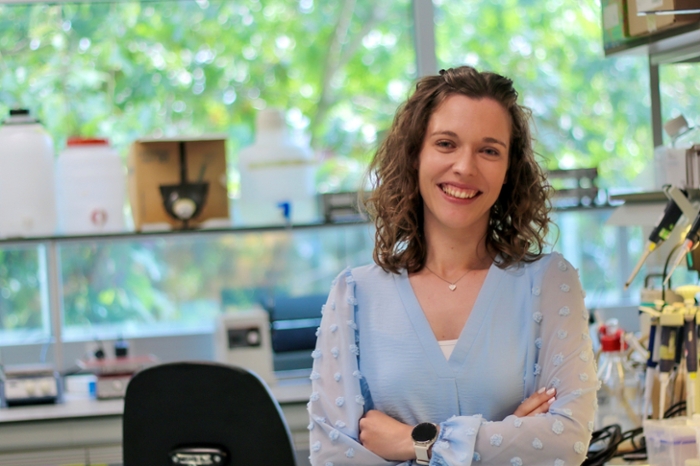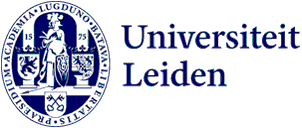
Unlocking the secrets of DNA repair: Sarah’s curiosity might lead to new cancer treatments
How do cells repair their damaged DNA—and what happens when that process is hindered and cancer arises? Sarah Moser has taken a closer look during her PhD, uncovering surprising insights that could help improve future cancer treatments.
Our DNA is constantly under attack. If the damage isn’t repaired, mutations can build up and cause cancer. ‘My PhD focused on understanding how cells repair DNA,’ says Moser, who works under the supervision of Jos Jonkers at the National Cancer Institute (NKI). ‘We studied BRCA1, a protein that, when mutated, increases the risk of breast and ovarian cancer. Certain treatments work well against BRCA1-mutated tumours, but some cancers escape these therapies. By understanding what goes wrong, we hope to improve treatments.’
Discovering a hidden player
As often happens in science, Moser’s research took unexpected turns. She identified new players in DNA repair, revealing ways to predict treatment success and design smarter therapies. One key discovery involved a protein called FIRRM, which helps fix double-strand breaks—serious cracks in DNA. ‘We found that FIRRM acts in the later stages of repair, a step few have studied,’ says Moser. When mice lacked FIRRM, embryos did not survive, showing its essential role.
As often happens in science, Moser’s research took unexpected turns.
Without FIRRM, cells are extremely sensitive to common cancer drugs like platinum chemotherapy and PARP inhibitors. This means measuring FIRRM levels could help predict how well patients respond to platinum agents, a frequently used chemotherapy.

When drugs reshape DNA packaging
Moser also studied how PARP inhibitors, drugs already used in patients with BRCA1 mutations, affect the structure of DNA. ‘We discovered that these drugs cause cells to push out histones—the proteins that wrap DNA,’ she explains. ‘This makes DNA more exposed and cells more vulnerable to treatment.’
This finding changes how researchers view PARP inhibitors: they don’t just damage DNA, but also alter its packaging environment, called chromatin. ‘Disrupting these packaging proteins makes cancer cells more sensitive to therapy,’ says Moser.
Following unexpected leads
Her work combined genetic screens and animal models, leading to discoveries that bridge basic biology and clinical research. ‘I didn’t expect to end up in chromatin biology,’ Moser says with a smile, ‘but following unexpected leads turned out to be the most rewarding part of my PhD.’
Sarah Moser defended her dissertation, New dimensions of the cellular response to DNA damage, on 14 November 2025 at the Academy Building. Her supervisor is Jos Jonkers.
LACDR and Netherlands Cancer Institute
‘The collaboration with Jos Jonkers’ group connects our division Cell systems and drug safety directly to the leading breast cancer research conducted by the NKI,’ says Miranda van Eck, scientific director of the LACDR. ‘Together, we are developing models to test new treatments and better understand resistance to therapies. In addition, our master’s students benefit from the education and internship opportunities offered by the NKI.’
About the header image: This image shows cells from a mouse with breast cancer. Each bright dot marks a site of DNA damage being repaired. Using special antibodies that recognise repair proteins, scientists can watch how cells find and fix broken DNA.
